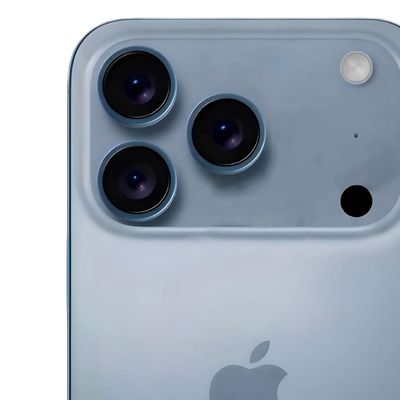In late 2021, Apple announced a major update for its standard AirPods, with the new earbuds featuring spatial audio, Adaptive EQ, force sensor controls, sweat and water resistance, MagSafe charging, and more.

Should you consider purchasing the $179 third-generation AirPods, or do you need the higher-end AirPods Pro, which sell for $249? Our guide helps to answer the question of how to decide which of these sets of AirPods is best for you.
Comparing the AirPods and AirPods Pro
The AirPods and AirPods Pro share a large number of important features such as spatial audio, sweat and water resistance, and the H1 chip. Apple lists these identical features of the two devices:
Similarities
- Custom high-excursion Apple driver
- Custom high dynamic range amplifier
- Motion-detecting accelerometers
- Speech-detecting accelerometers
- Dual beamforming microphones
- Inward-facing microphones
- Force sensors
- Bluetooth 5.0
- H1 chip
- Spatial audio with dynamic head tracking
- Adaptive EQ
- Hey Siri
- Automatic device switching
- Live Listen audio
- Headphone levels
- IPX4 sweat and water resistance
- MagSafe Charging Case
- Five minutes in the case provides around one hour of listening time or around 1 hour of talk time
- Personalized engraving option
Apple's breakdown shows that the two sets of AirPods a share large number of key features. Even so, there are some meaningful differences between them that are worth highlighting, including design and Active Noise Cancellation.
Differences
AirPods
- Semi in-ear design
- Skin-detect sensor
- IPX4 sweat and water resistance earbuds and charging case
- Up to six hours of listening time with a single charge (up to five hours with spatial audio enabled)
- Up to four hours of talk time with a single charge
- Up to 30 hours of listening time using the charging case
- Up to 20 hours of talk time using the charging case
AirPods Pro
- In-ear design with silicone ear tips (three sizes)
- Vent system for pressure equalization
- Dual optical sensors
- Active Noise Cancellation
- Transparency mode
- Conversation Boost
- IPX4 sweat and water resistance earbuds
- Up to 4.5 hours of listening time with a single charge (up to five hours with Active Noise Cancellation and Transparency off)
- Up to 3.5 hours of talk time with a single charge
- More than 24 hours of listening time using the charging case
- More than 18 hours of talk time using the charging case
Design
The design of the standard AirPods means that they simply hook into a user's ears. The AirPods Pro, on the other hand, feature in-ear silicone tips that need to be pushed into the ear canal. The AirPods Pro are also slightly larger and heavier than the standard AirPods.
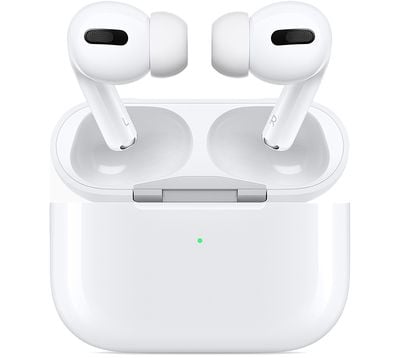
The silicone tips allow the AirPods Pro to create a firm seal in the ear canal to improve audio quality and enable Active Noise Cancellation (ANC), and Apple provides three different tip sizes in the box and offers a fit test in the Settings app.

Not all wearers like the sensation of the silicone tips pushed deeply into their ears, and these users may prefer the less intrusive sensation of the standard AirPods. Visually, other than the silicone tips, both sets of AirPods look very similar.
Active Noise Cancellation
Thanks to the seal created by its silicone tips, the AirPods Pro can use Active Noise Cancellation to significantly reduce the volume of background sounds. When you want to let sound from the outside world in, holding the force sensor on one of the earbuds enables Transparency mode.
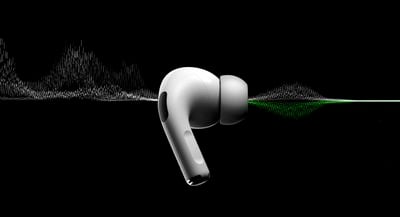
If you plan to use your earbuds in loud environments such as public transport, you may appreciate the AirPods Pro's ability to block out background noise so you can focus on your audio playback. The standard AirPods do not feature ANC.
In-Ear Detection
The standard AirPods feature an all-new skin-detect sensor to more accurately discern if AirPods are in the ear to pause playback. The new skin-detect sensor works by detecting water content in the wearer's skin, which ensures that it does not mistake pockets, tables, or other surfaces for skin.
Instead of skin-detect sensors in each earbud, the AirPods Pro use dual optical sensors to detect if they are in a user's ear. While they effectively perform the same function, the optical sensors can simply tell when they are against a surface or covered up, rather than specifically against skin. This means that if you put an AirPods Pro earbud in a pocket or on a surface, it could accidentally resume playback.
IPX4 Sweat and Water Resistance
While both the AirPods and the AirPods Pro earbuds feature sweat and water resistance, the MagSafe charging case of the standard AirPods is also IPX4-rated.

Conversation Boost
Conversation Boost is a new accessibility feature in iOS 15 that is designed to help people with mild hearing difficulties hear conversations better. The feature uses beam-forming microphones to boost the volume of a person talking in front of you, making it easier to listen to someone who's chatting with you. Only the AirPods Pro have Conversation Boost, and the feature is unavailable with the standard AirPods.

Battery Life
With Active Noise Cancellation, Transparency, and spatial audio disabled, the AirPods Pro offer one less hour of listening time compared to the standard AirPods. The standard AirPods can deliver six hours extra listening time with the charging case.
When making calls, the standard AirPods can deliver 30 minutes extra talk time compared to the AirPods Pro, and two hours extra talk time using the charging case. For the best possible battery life, you should choose the AirPods, but there is overall little difference between the two sets of earbuds when it comes to battery life.
Other AirPods Options
If you are looking for AirPods, but the latest third-generation model is out of your price range, there are the second-generation AirPods, which start at $129. These miss out on the ability to charge wirelessly or with MagSafe, and do not have spatial audio, sweat and water resistance, or force sensors.
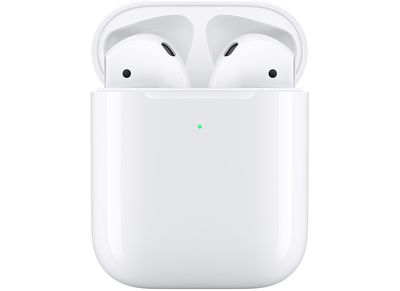
They still feature the H1 chip, Hey Siri, automatic device switching, motion and speech detecting accelerometers, Bluetooth 5.0, and dual beamforming microphones, as well as up to five hours of listening time on one charge and more than 24 hours of listening time with the charging case. For most users though, it will still be worth spending the extra $50 for the third-generation AirPods if you can.
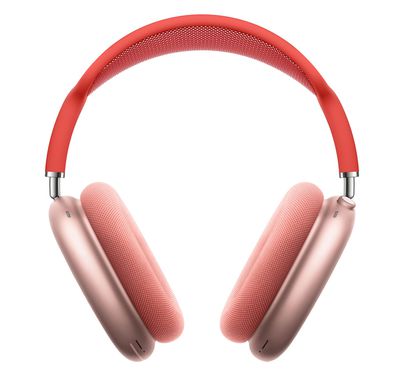
For a higher-fidelity audio experience, there are the AirPods Max, which are priced at $549. These are over-ear headphones that take the listening experience to the next level with improved sound quality, better Active Noise Cancellation (ANC), and up to 20 hours of listening from one charge.
Final Thoughts
The standard AirPods are now very similar to the AirPods Pro, offering almost all of the same features at a lower price point. As a result, the third-generation AirPods should be the default choice for most prospective buyers.
You should only buy the AirPods Pro if you specifically prefer the fit of in-ear silicone tips or you need Active Noise Cancellation. It is also worth buying AirPods Pro if you could make good use of Apple's Conversation Boost accessibility feature.
AirPods Pro frequently see discounts to $199 or even lower through Amazon and other third-party retailers, so stepping up to the Pro version may be more worth it if you can take advantage of one of those deals. Note that the AirPods Pro were just updated with MagSafe alignment for the charging case, but no other changes were made, so make sure you know which version you are buying. The standard AirPods also often see solid discounts, so it is always worth seeking the best price using our Deals roundup.
If you also have AirPods Max, which already offer ANC, and are looking for an additional pair of headphones to use while working out or on the go, the third-generation AirPods are also a good choice.
The first-generation AirPods Pro are over three years old have been replaced by a second-generation model. The third-generation AirPods are much newer and not likely to be updated or replaced anytime soon. If you plan on keeping your AirPods for several years, it may be worth factoring the age of the first-generation AirPods Pro into your buying decision.







